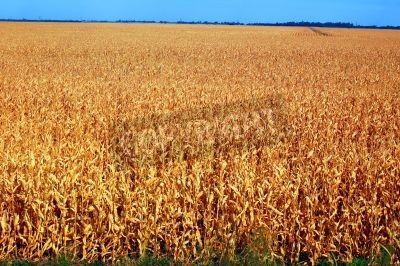China has issued the Structure Adjustment
Plan on Corn Planting Area in Sickle-shape Region (2016-2020). The key tasks
mentioned in the plan are to decrease corn planting area by over 3.33 million
ha (50 million mu) and stabilized at 6.67 million ha (100 million mu) by 2020, and
focus on developing silage corn, soybean, high quality forage, coarse cereals
and beans, spring wheat, economical fruits, ecological functional plants, etc.

Source: Baidu
The "sickle-shape" region
includes the northeast cold region, the northern agriculture-animal husbandry
ecotone, the northwest sandy and arid areas, areas along the Taihang mountain,
and the southwest rocky desertification area. Resembling a
northeast-north-southwest-northwest sickle-shape area in the map, these areas
are the key areas for the structural adjustment of corn growing areas. These
areas are typical dry-farming area and animal husbandry development
advantageous area, where the ecological environment is fragile and the corn
yield is low and unstable.
Key regions for corn structure adjustment
in the "sickle-shape" region
1. Northeast cold region
Regional characteristics: Located in high
latitude, high and cold areas, this region includes northern Heilongjiang
Province, the fourth and fifth accumulated temperature zones in northeastern
Inner Mongolia Autonomous Region and mountainous areas in eastern Jilin
Province, where the ≥10℃ accumulated
temperature is from 1,900-2,300℃. With a long and cold winter and a short summer, the frost-free
season lasts for only 90+ days. Due to the relatively large temperature
difference between day and night, crops are likely to be negatively affected by
low temperature, cold damage and early frost, etc. Years of continuous corn
growing has resulted in soil hardening and serious phytotoxicity of herbicide
residue, which negatively influences the improvement of grain yield of per unit
area and the enhancement of quality.
Main orientation: Striving to reduce the
area of grain corn by over 666,667 ha (10 million mu). The following crops can
be planted instead: silage corn, forage rape, medicago, soybean, strong gluten
spring wheat, and hard red spring wheat.
2. Northern agriculture-animal husbandry
region
Regional characteristics: This region is
the transitional region that connects farming areas and grassland ecological
zones, including areas from various provinces and regions, such as
Heilongjiang, Jilin, Liaoning, Inner Mongolia, Shanxi, Hebei, Shaanxi, Gansu,
etc. The climate in this region is semi-arid and sub-humid. In this region,
although the land resources are rich and the thermal conditions are good, there
is a shortage of water resources and the soil degradation and sandification are
serious, so this region is where many types of disasters occur frequently and
cause great losses. Among the disasters, drought has the highest probability of
occurrence, with the widest influence and the most serious extend of damage.
Main orientation: Striving to reduce the
area of grain corn by more than 2 million ha (30 million mu). The following
crops can be planted instead: soybean, peanut, coarse cereals and beans,
forage, forage rape, drought-tolerant coarse cereals and beans, potato,
economical fruits and drought- and salt-tolerant psammophytes.

3. Northwestern sandy and arid region
Regional characteristics: Located in the
northwestern inland area, in the north of Kunlun Mountains, Altun Mountains,
Qilian Mountains, Baiyu Mountain, and Daqing Mountain, this region includes the
following provinces/ regions: Xinjiang, Gansu, Ningxia, Inner Mongolia.
Belonging to the droughty desert climate, this region is dry and rainless, with
abundant solar-thermal resources. With a large temperature difference between
day and night, the ≥10℃ accumulated
temperature is from 2,800-4,400℃, and the frost-free season lasts for 115 to 210 days. There is a
shortage of water resources and the desertification and salinization of oasis
are serious. The grassland is degenerated, and the farming ecological
environment is fragile.
Main orientation: Striving to reduce the
area of grain corn by 333,333 ha (5 million mu). The following crops can be
planted instead: flax, oil sunflower, forage rape, silage corn, medicago, salt-
and drought-tolerant mandulapalka for oil and feed use and other psammophytes.
4. Areas along the Taihang Mountains
Regional characteristics: Located in the
south of Mount Wutai and in the north of Funiu Mountain, this region includes
mountainous areas in eastern Shanxi Province and western Hebei Province. The
weather is cool there. From north to south, the climate gradually changes from
semi-arid to sub-humid, with an annual precipitation of 500-600 mm. With the
north side higher than the south, the altitude of this region is 800-1,000
meters. Dry farming pervades, the dryland accounts for more than 80% of the
total cultivated area. With shallow soil, the soil erosion is serious. Due to
the poor basic agricultural conditions and because of lack of irrigation
facilities, spring drought and summer drought take place frequently, so the
corn yield is low and unstable.
Main orientation: Striving to reduce the
area of grain corn by 133,333 ha (2 million mu). The following crops can be
planted instead: coarse cereals and beans, silage corn, chestnut, walnut,
hawthorn, vegetables, and Chinese herbal medicines.
5. Southwestern rocky desertification area
Regional characteristics: Located in the
east of Hengduan Mountains and in the west of Dayao Mountain, this region's
main part is the Yunnan-Guizhou Plateau, including the following provinces and
regions: Guangxi, Yunnan, and Guizhou. With a temperate and subtropical humid
and semi-humid climate, the hydrothermal condition in this region is relatively
good. More than 80% of the land is hilly, mountainous areas and plateau, with
an altitude of 500-2,500 meters. In this rolling area, agriculture is
stereoscopic. However, the lighting conditions are poor, and spring drought,
summer drought, and autumn drought usually occur. The complicated landform is
not conducive to agricultural scale management and mechanized production. The
karst landforms are widespread, the rocky desertification is serious, and the
agricultural ecological system is fragile.
Main orientation: Striving to reduce the
area of grain corn by 333,333 ha (5 million mu). The following crops can be
planted instead: coarse cereals and beans, tea leaf, walnut, oil-tea camellia,
Chinese herbal medicines, feed-use ramie, feed-use mulberry, mandulapalka for
oil and feed use and artificial grassland.
This article comes from Seed China News 1609, CCM

About CCM:
CCM is the leading market intelligence provider for China’s
agriculture, chemicals, food & ingredients and life science markets. Founded in 2001, CCM offers a
range of data and content solutions, from price and trade data to industry
newsletters and customized market research reports. Our clients include Monsanto,
DuPont, Shell, Bayer, and Syngenta. CCM is a brand of Kcomber Inc.
For more
information about CCM, please visit www.cnchemicals.com or get in touch with us
directly by emailing econtact@cnchemicals.com or calling
+86-20-37616606.
Tag: seed corn